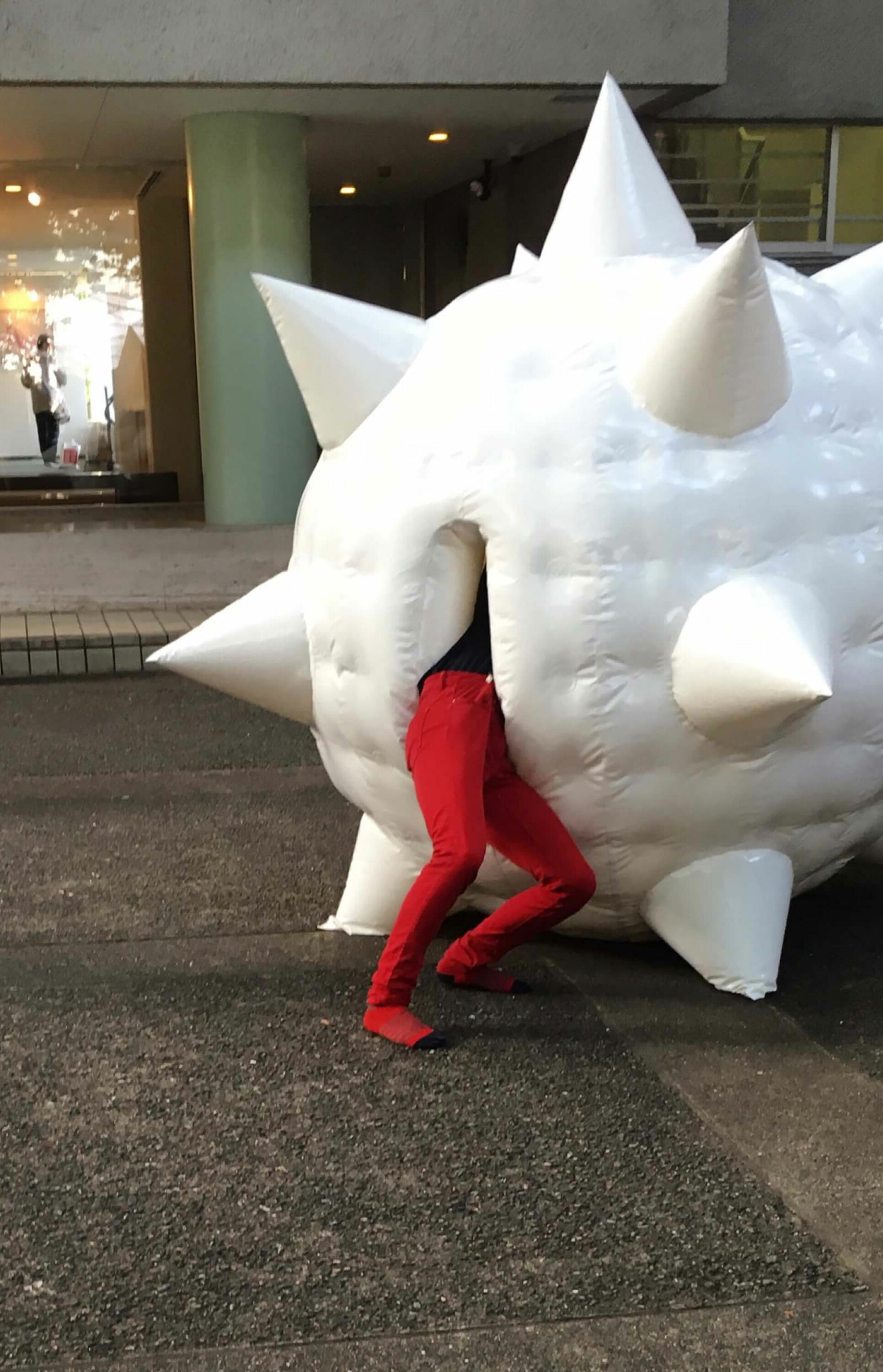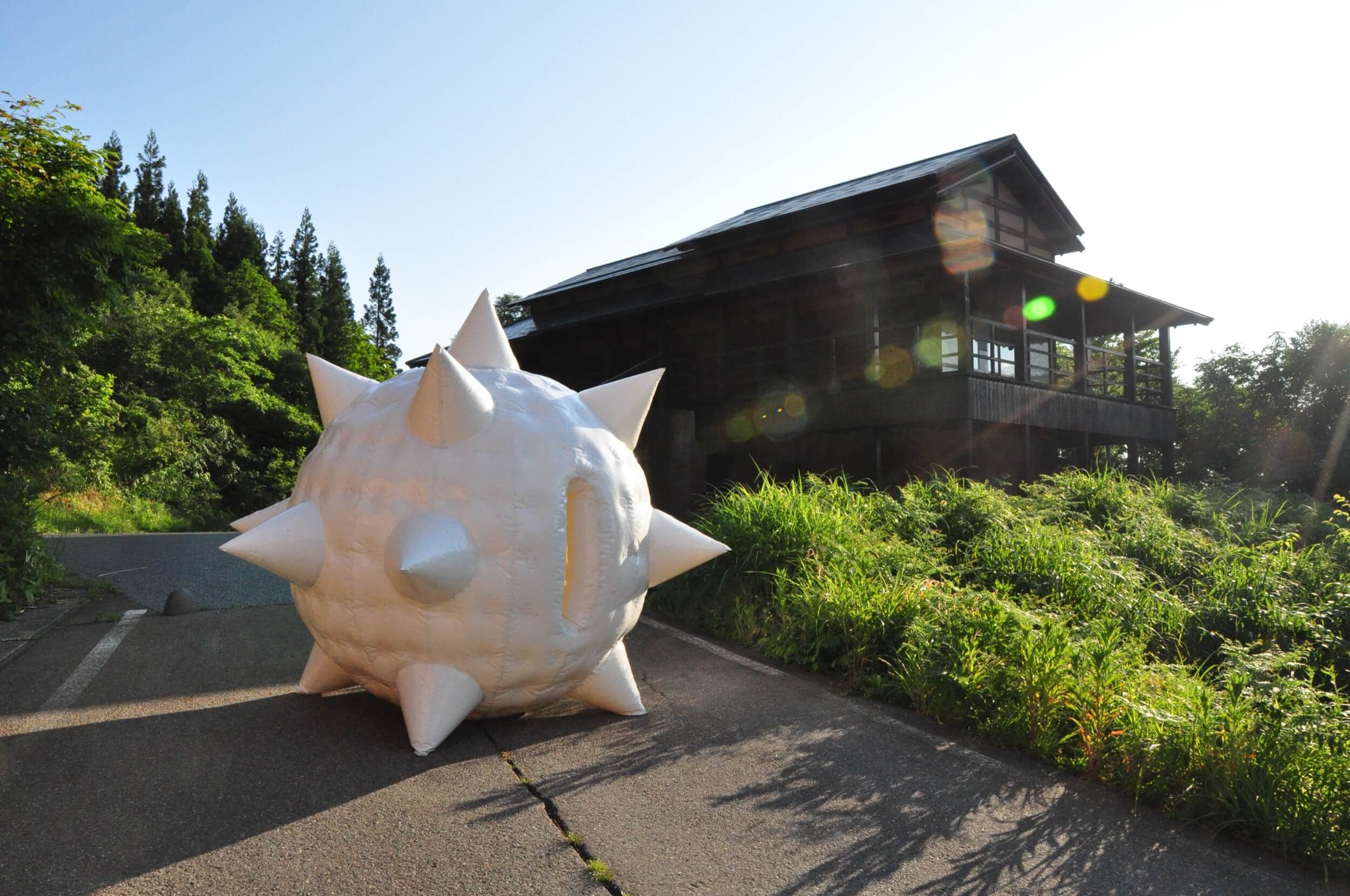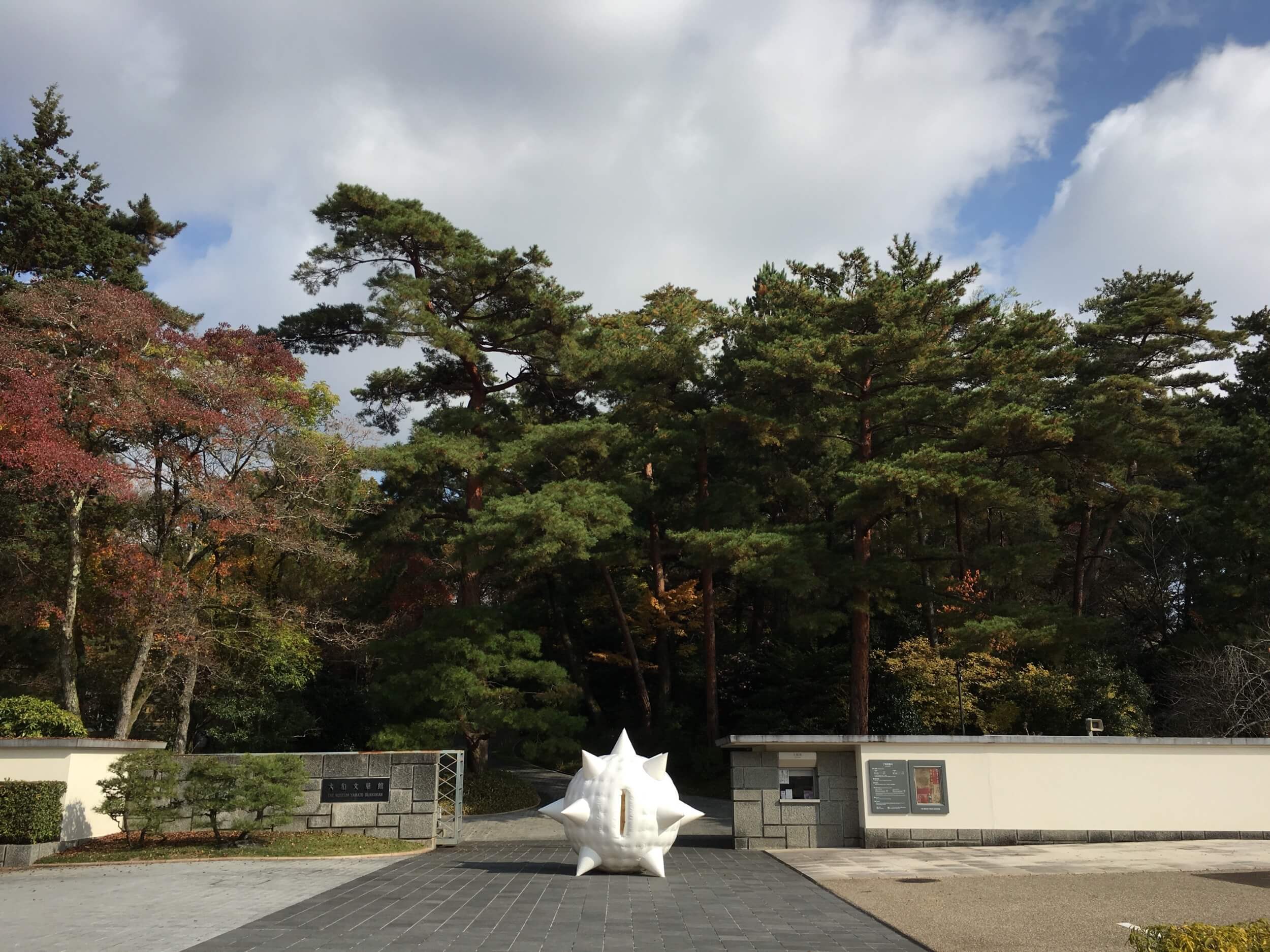另一种视角,另一种表达
another perspective, another expression
Japan, 2016
Art Sculpture
展览名称:从中国出发
Art begins with sculpture,” said Mr. Liang Sicheng. And on the other side of the globe, Gropius proclaimed in the drafting of the Bauhaus Manifesto, “The ultimate goal of art is architecture.” One marks the beginning, the other the end. Although in different linguistic environments, one can still glimpse a profound connection between sculpture and architecture.
Both are related to three-dimensional volumes, expressed through materials, forms, and space. The difference lies in sculpture’s subtraction while architecture’s addition. This fascinating relationship between positive and negative, deficit and surplus, has drawn many architects into the realm of sculptural creation.
As the founders of Slow Studio, Vincent GU was invited in 2016 as a multi-disciplinary artist to participate in the contemporary art group exhibition “Starting from China” held in Japan. His sculpture “Peace Bomb” was exhibited in both Tokyo and Togamachi, indoors and outdoors, providing a greater freedom of creation. This allowed Vincent to explore a new mode of expression from the perspective of an architect.
The origin of creating this sculpture stems from the deeply concealed relationship between China and Japan. The histories of both countries are intertwined with the topic of war. However, in participating in the exhibition in Japan, Vincent hoped to create a piece that calls for peace. Thus, Peace Bomb emerges with an appearance resembling a meteor hammer, strong and sharp, yet its white exterior and soft material seem to convey a sense of inner tranquility, inviting exploration.
The choice of color and material is influenced by Vincent’s identity as an architect. So when people actually touch the PVC material of the sculpture, the hard exterior begins to dissolve, and the intended message of the sculpture begins to shift. There is a “narrow door” in the middle of the sculpture through which viewers can enter to see it from a different angle or even feel it. Due to the semi-translucent nature of PVC, it transforms everything outdoors into a hazy, dream-like scene, as if the mother’s womb is nurturing a bright, hopeful future.
It all hinges on different perspectives. If one’s gaze remains fixated only on the dust of past wars, they will be ensnared in violence. However, with an additional perspective, seeing the future we are capable of nurturing, then peace can begin from this moment.
Furthermore, unlike traditional sculptures, Peace Bomb embarked on a journey with Gu Jia in Japan. Along desolate mountain paths, beside silent buildings, amidst verdant fields, it exhibited different artistic hues. In the ongoing dialogue with its surroundings, it seems to have begun a narrative about itself. One might even say that this artwork has transcended the conventional notion of “sculpture” and has started to redefine itself.
Whether in small spaces or vast volumes, whether as a sculptor or an architect, uncovering the deeper meanings of things, capturing their fleeting expressions, and allowing them to break free from existing frameworks to express themselves, are the steps to touch the boundaries of art.








